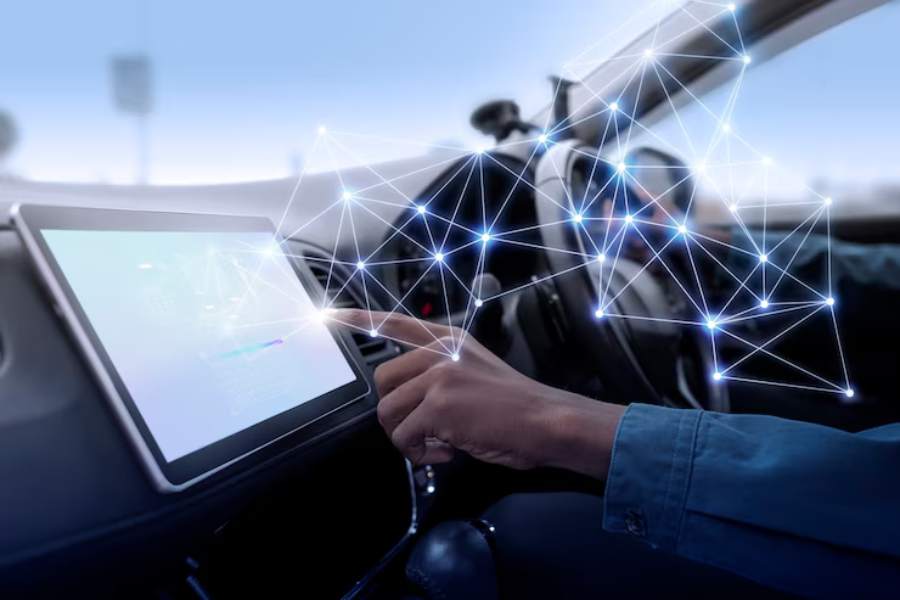Michigan—a state known for giving birth to the automotive revolution—is not idling in the age of smart transportation. No longer content with being just the home of Detroit’s Big Three, Michigan is evolving into the national lab for transportation innovation. Mobility is no longer simply about moving from point A to B. It’s about data. About connection. About infrastructure that thinks, and vehicles that talk—not just to humans, but to each other. This is the era of Michigan mobility.
And Michigan? It’s not watching from the sidelines. It’s at the wheel.
Infrastructure, Reinvented
To talk about smart transportation without mentioning infrastructure is like talking about music without rhythm. Roads are being redesigned—not repaved, but reimagined. In Ann Arbor, for instance, the University of Michigan’s Mcity test facility is a controlled environment where connected and autonomous vehicles are tested on mock urban streets. Meanwhile, the I-94 corridor near Detroit is undergoing a transformation into a connected and automated vehicle (CAV) corridor.
This is no small upgrade. According to the Michigan Department of Transportation (MDOT), the state has installed more than 600 miles of “smart” infrastructure. These are not just roads. These are communication platforms. Pavement embedded with sensors. Traffic lights that can detect a vehicle’s presence and adapt to reduce congestion. Bridges that report structural stress in real-time.
Imagine a highway that knows where you’re going before you do. That’s not science fiction. That’s Michigan.
Connected Vehicles: Beyond the Dashboard
Connected vehicles are no longer prototypes hiding in garages. They are on Michigan roads today. These vehicles don’t just connect to smartphones; they connect to each other. To roadside units. To the cloud. Vehicle-to-everything (V2X) technology is accelerating. And Michigan is building the lanes to carry it.
Take the Detroit Smart Parking Lab as an example. Here, cars talk to parking garages. They navigate, park, pay—all autonomously. One 2023 report from the Center for Automotive Research showed that vehicle connectivity solutions could reduce crash rates by up to 80% in scenarios involving unimpaired drivers. That’s not just innovation; that’s saving lives.
Ford, General Motors, and Stellantis are all piloting V2X applications across Michigan, embedding tech not just in cars but in cityscapes. East Lansing? Testing intersections where connected vehicles receive signal phase and timing (SPaT) messages. Of course, this raises questions about the safety and cybersecurity of such vehicles. Just as we have to protect phone privacy, the onboard networks of unmanned vehicles need to be protected. Over 2,800 connected vehicles circulate as part of the Ann Arbor Connected Vehicle Test Environment—the largest deployment of its kind in North America.
Public Transit Gets Smarter Too
Smart transportation isn’t all about private cars and corporations. Public transit, often overlooked in discussions of mobility innovation, is getting its share of digital steroids.
In Grand Rapids, the Rapid transit system has deployed electric buses equipped with intelligent transit systems that update riders on delays and reroute based on traffic data. Ann Arbor Area Transportation Authority? Partnered with May Mobility to run autonomous shuttles on fixed routes. A bus that drives itself. Welcome to the future.
These efforts are more than futuristic gimmicks. They’re real. They’re operating now. And they’re expanding access to mobility, particularly in underserved communities where car ownership isn’t viable. They even often have free Wi-Fi. Yes, it’s still smart to use a VPN like VeePN when connecting to these networks. It’s to protect your data.
The Economic Engine Behind the Wheel
Michigan’s smart transportation ambitions aren’t just about sleek cars and glowing dashboards. They’re about jobs. Investment. Growth.
Between 2019 and 2023, Michigan attracted over $11 billion in mobility and electric vehicle-related investments. The state launched the Office of Future Mobility and Electrification to oversee and coordinate these efforts, pushing hard on the accelerator. Add to that the Michigan Mobility Funding Platform, which awarded over $8 million in grants to more than 100 mobility startups and companies. The goal? Help them pilot their ideas on real Michigan roads.
This isn’t just reinvention. It’s re-industrialization, smart city by smart city, byte by byte.
Challenges, Yes. But Also Motion
Of course, nothing moves forward without friction. Data privacy remains a pressing concern. Who owns the data generated by your connected vehicle? Hackers don’t need to hotwire a car anymore; they just need a Wi-Fi signal.
And then there’s infrastructure equity. Will rural areas benefit from these advancements? Or are they stuck watching from a distance, with potholes instead of sensors?
Michigan acknowledges these questions. That’s why programs like Michigan Central Station’s Innovation District are not just building tech but also policy frameworks around cybersecurity, ethics, and equitable deployment. It’s not perfect. But it’s moving.
The Human Element
Sometimes, innovation forgets the user—the commuter, the pedestrian. But Michigan’s approach tries to keep the human at the center. In Detroit, new mobility projects are required to include community input before deployment. In Kalamazoo, bike-sharing data is used to redesign safe cycling paths.
Smart transportation is not about replacing humans. It’s about augmenting them. Making them safer. Making travel smoother. And yes, making it a little cooler.
Where the Road Leads
Michigan is not merely adjusting to the mobility revolution; it’s shaping it. The state is building something far more radical than smarter roads through a blend of transportation infrastructure innovation, connected vehicle testing grounds, and public-private partnerships. It’s building a new way of thinking about movement itself.
The road ahead is wired, intelligent, alive with sensors and signals. And at this moment, it runs right through Michigan.
Because the future of smart transportation isn’t in Silicon Valley. It’s in the Motor City. And it’s already moving.

